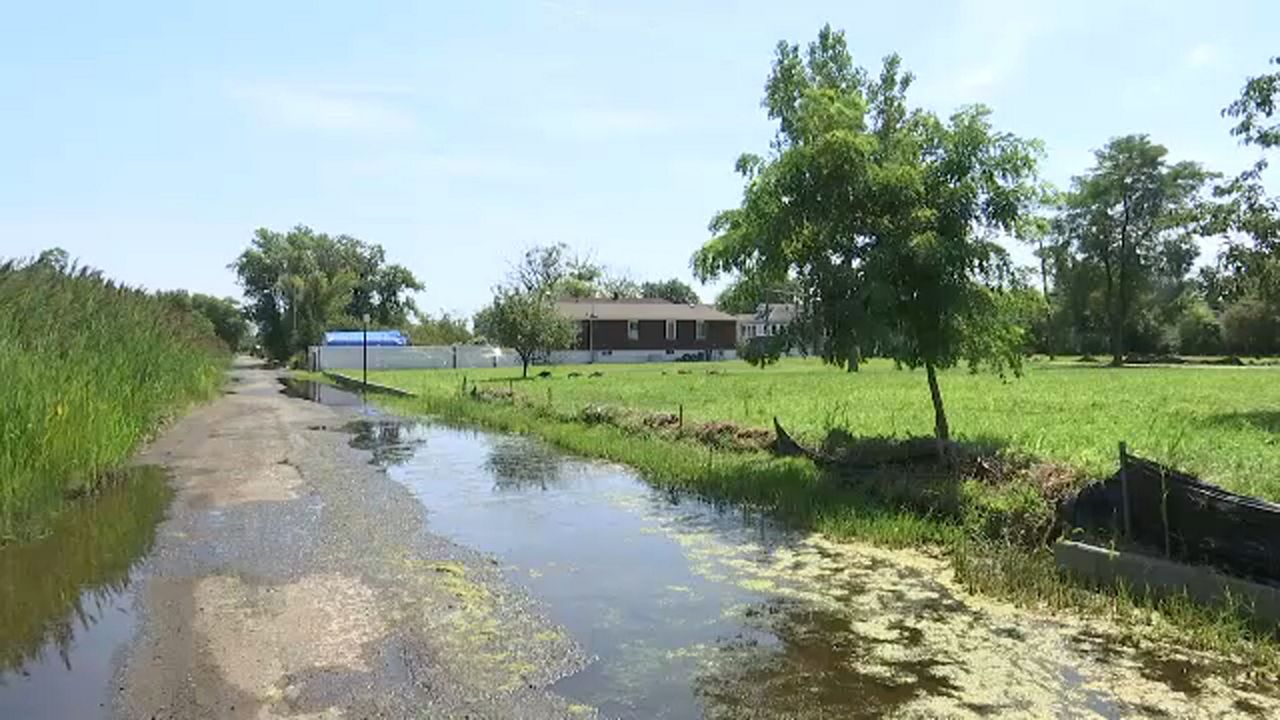Ten years after Hurricane Sandy prompted New York’s first stab at buying out homeowners in flood-prone areas, only a few hundred households have been paid to leave their houses — and construction continues in the floodplain.
Now, new government funding sources could begin the process of shepherding residents to higher ground, even as some communities remain conflicted about how many people should have to move, and to where.
Elected officials, residents and policy experts say that this is the time — before another major storm — to begin that process, even if the success of a voluntary buyout program is uncertain.
“We can’t wait another three or five years,” said Khaleel Anderson, a state assemblyman who represents and lives in the Rockaways. “We need to start having these conversations right now.”
‘Closing our eyes and pretending it away’
The scientific projections are clear: By the end of the century, and possibly before, large swaths of New York City’s beachfront communities are likely to be underwater on a typical sunny day. In the 2080s, according to maps from the New York City Panel on Climate Change, almost the entire Rockaway peninsula will flood during the monthly high tide.
By then, more than 2 million New Yorkers could live in the floodplain, according to a recent analysis from the climate change consulting firm Rebuild By Design, up from 1.3 million today.
In the wake of Hurricane Sandy, a few communities most deeply impacted by flooding called for buyouts, leading to a state program that eventually bought out several hundred homes in Staten Island. A city program, Build It Back, aimed to return coastal neighborhoods to their pre-storm norm; it purchased some lots where homes had been ruined, and sold them back to developers with the requirement that they only build houses raised on stilts, or otherwise helped homeowners rebuild their own houses that way.
The two programs produced two distinct results. The state program required that the bought-out lots not be redeveloped, to give those coastal areas back to nature and create buffer areas for storm surges. The state bought more than 700 homes across the state, including about 500 on Staten Island; it cost about $271 million to purchase and demolish the homes, as well as re-grade and seed the lots.
Build It Back became controversial for lack of payments to contractors and slow reimbursement of homeowners. It ended up providing construction services to thousands of city homes, even as thousands more had their requests for funding rejected, and cost more than $2.2 billion. Overall, it led to denser neighborhoods in increasingly flood-prone areas, said Thaddeus Pawlowski, an assistant adjunct professor at Columbia University who worked on the city’s post-Sandy storm recovery efforts.
“The little wooden buildings on top of the foundations are not gonna last that long,” Pawlowski said. “But those foundations are gonna last a thousand years, after the entire eastern shore is underwater.”
As the city and state undertook billions of dollars in resiliency projects, discussion of creating a larger blueprint for buyouts fell by the wayside.
Yet construction continued in seaside neighborhoods. The city allowed the construction or alteration of nearly 2,400 buildings in the so-called 100-year flood zone, which has an estimated 1% chance of flooding each year, according to a recent report from city Comptroller Brad Lander’s office. Since the storm, the report found, market-rate values of floodplain real estate have grown by 44%.
And the floodplain itself is growing.
“We’re not doing anyone any favors by closing our eyes and pretending it away,” Lander said in an interview. “There are neighborhoods where some agencies are spending hundreds of millions of dollars on infrastructure, and other agencies are saying, ‘This is an area we won't be able to protect.’”
Some communities began their own planning efforts. In Edgemere, on the Rockaways, community members created a resiliency plan, which calls for funding for buyouts to move people farther from coastline areas and creating wetland and park buffer areas on the shore. The zoning changes requested in that plan passed the City Council this summer.
Yet in Edgemere as in other neighborhoods, buyouts — and the extent to which they would be voluntary — remained a controversial issue.
“The families that I’m talking to want to be here,” said Anderson, who lives a block and a half from Jamaica Bay. “It’s racist to ask Black and brown families who live along the Bay to leave when we have put millions upon millions of dollars into the beach and boardwalk.”
New funding, new conversations
In the wake of Hurricane Ida, the city saw an unlikely group of residents call for buyouts: People living in neighborhoods miles from the Atlantic Ocean. Residents of areas like Hollis, Queens, asked the city to purchase their homes, which have seen repeated flooding during intense rainfall since the storm.
The renewed attention on buyouts from Ida has come as the new government funding sources to support managed retreat are coming into view.
The Federal Emergency Management Agency received $3.5 billion over five years through the federal infrastructure act for buyouts and home elevations — triple the amount that was available before. The government has also updated rules that would allow for easier and faster funding of state-led buyout programs, experts say.
In New York, voters this November could approve a ballot measure that would allow the state to issue $4.2 billion in bond funding for climate and environment projects, including $250 million to pay for buyouts.
The state would look to pad that funding with additional money from cities and the federal government, said Jessica Ottney, director of policy and strategy at The Nature Conservancy. Though it will take some time to establish the office that would administer the dollars. (The state is not considering seizing properties through eminent domain, Ottney said.)
“This money will be spent efficiently,” Ottney said. “But there's also going to need to be some planning and conversation on how to make the most of this funding, and do it in a way that really brings benefits to communities.”
Any statewide buyout program will need to successfully manage several things that government agencies can struggle with, said Jane Brogan, the disaster recovery program director for APTIM and the former chief policy and research officer for the Governor’s Office of Storm and Recovery. Those include extensive community outreach to get buy-in and coordinating across agencies and levels of government.
“You shouldn't be just looking at the homes that need to be bought out, but what happens to that land, getting elected officials comfortable with losing tax base, working with housing agencies to make sure there's houses for people to move into,” Brogan said.
Brogan said the city in particular will have to speed up its traditionally — and in large part purposefully — slow development approval mechanisms to move as quickly as possible.
“While it may take 10 years, it is still an emergency,” Brogan said.








